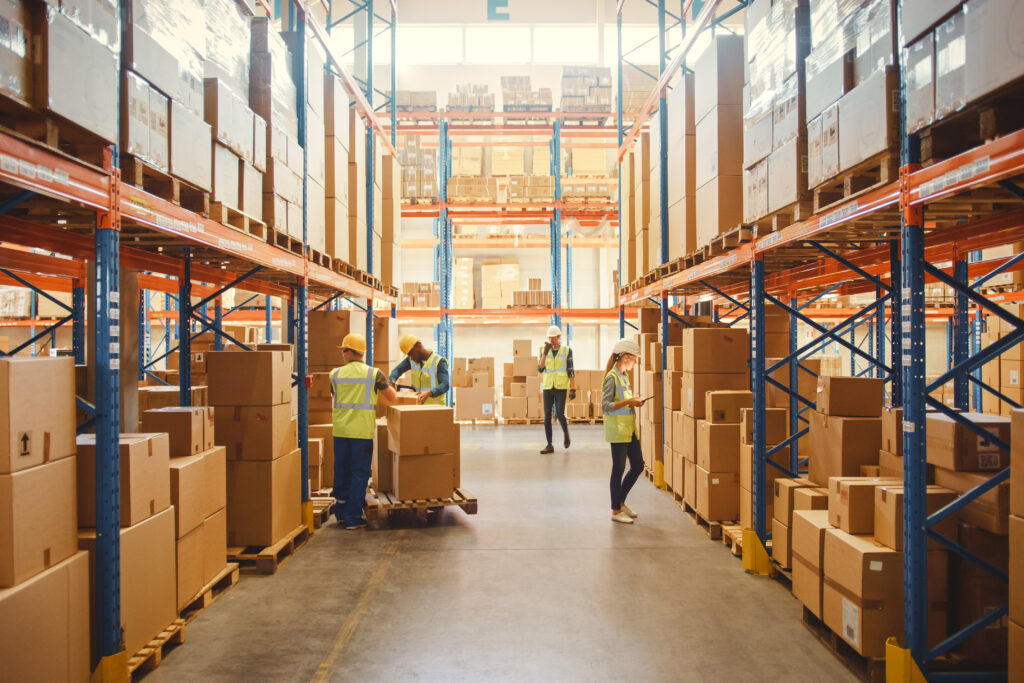Improve Warehouse Efficiency by Reducing Energy Consumption

Improve Warehouse Efficiency by Reducing Energy Consumption
Large warehouses consume huge amounts of energy. Heating and cooling large spaces, lighting, charging and powering equipment, all require a lot of electricity. While it might seem like those utility bills are fixed costs, there are strategies that you can implement to improve your overall warehouse efficiency and reduce your expenses. In this article, we’re going to look at several of those strategies.
Conduct an energy efficiency assessment
In order to reduce operational costs and increase sustainability and warehouse efficiency, monitoring and managing your energy use is critical. An assessment involves gathering data about historical consumption from utility bills and any existing energy management systems, equipment usage patterns, and employee behaviors. You can then analyze trends, identify peak usage periods, and establish baseline consumption levels. The next step in the assessment is to walk through your facility, checking for any issues with air seals, windows, or doors. Lastly, develop a prioritized list of energy saving goals, complete with cost estimates, projected energy savings, and ROI calculations. By identifying areas of waste and implementing warehouse solutions that lower usage, your operation can significantly reduce utility bills, often by 10% to 30%, or more.
Use high quality dock seals and shelters
Your loading bays are where you lose a lot of heat in the winter and cool air in the summer, adding to your energy use and utility bills. By installing dock seals and dock shelters, you can create a tight closure between the truck and your warehouse, preventing air leakage and making it easier to maintain the desired inside temperature. Dock seals and dock shelters also provide the added benefit of protecting your products from outside contaminants.
Improve your doors
In addition to warehouse solutions like dock seals and dock shelters, another strategy for preventing air leakage and energy loss is to use high quality doors. All the exterior doors on your warehouse should be well insulated and heavy duty. Plus, it’s important to choose high speed options that quickly open and close, minimizing the amount of time that heated or conditioned air can escape during loading and unloading and while entering and exiting.
Optimize your HVAC system
Regular maintenance of heating and cooling equipment ensures that your system operates at peak performance and is a key part of warehouse efficiency. Implementing programmable thermostats helps you automatically adjust temperatures during off hours, reducing energy waste when the warehouse is unoccupied. Proper insulation of the warehouse structure is also essential, as it minimizes heat transfer and reduces the workload on HVAC systems, resulting in lower energy consumption and utility bills.
Upgrade your lighting
We recommend installing LED lighting to improve your overall warehouse efficiency. LED fixtures use less energy than traditional options while often providing better illumination. You can also use motion sensors to ensure that lights are only on when they are needed, and add skylights to rely more on natural lighting during the daytime.
Complete a forklift power study
Power studies play an important role in maintaining forklifts and optimizing battery performance. These comprehensive assessments offer in depth insights into how your machines consume energy and their operational efficiency. By integrating battery monitoring, advanced data analysis, and expert knowledge, power studies provide valuable recommendations for fleet managers. These insights lead to improved forklift performance, a reduction of energy waste, and more effective utilization of your equipment.
Click here to see what a forklift power study entails and how they help improve warehouse efficiency and lower utility bills.
Implement a warehouse management system (WMS)
One of the most effective warehouse solutions is a WMS. These systems can optimize picking routes, reducing unnecessary travel time and energy use by forklifts and other equipment. Additionally, a warehouse management system can improve inventory management, minimizing redundant movements and searches for products. By streamlining operations, warehouses can significantly reduce their overall costs.
Take advantage of smart charging systems for equipment
Smart charging systems for your forklifts and other electric machines will help ensure that batteries are charged efficiently and only when necessary. Scheduling battery charging during off peak hours, when electricity rates are typically lower, can result in significant cost savings. Plus, these systems can monitor and adjust the charging process based on your specific batteries to extend their lifespan, further minimizing your overall expenses.
Train employees for warehouse efficiency
Educating staff about the importance of energy conservation and its impact on both the environment and the company’s bottom line can foster a culture of sustainability. Implementing clear policies for turning off equipment and lights when not in use, keeping exterior doors shut as much as possible, and encouraging other energy conscious behaviors can lead to significant reductions in the utility bills for your warehouse, resulting in lowering waste.
If you have any questions about improving energy efficiency, implementing effective warehouse solutions like dock seals and dock shelters, or how to conduct a power study, contact our team.
